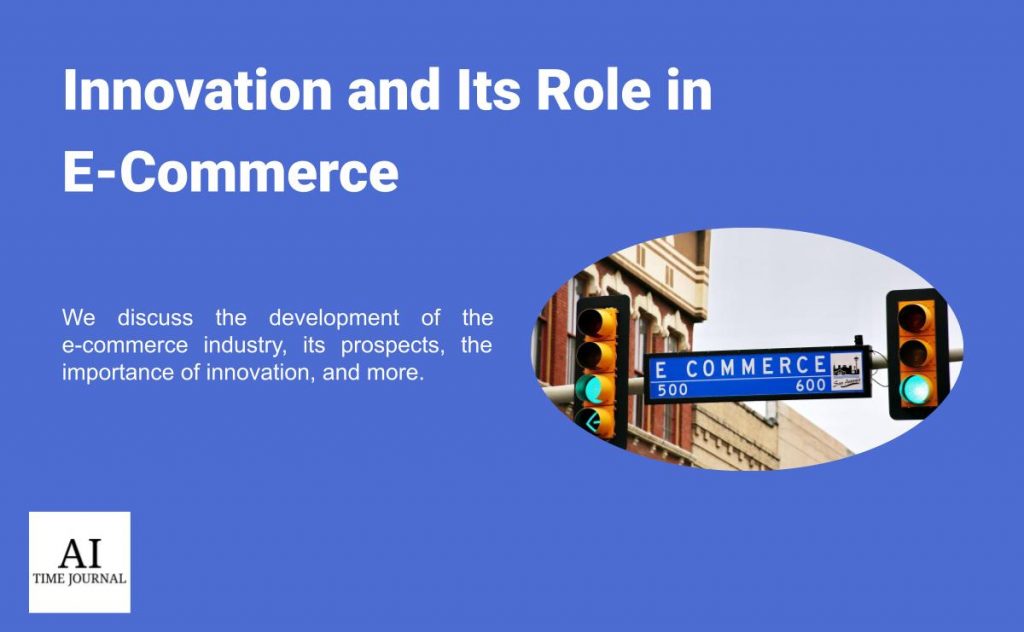
In 1969, the first e-commerce company, CompuServe, was launched. Although the first legitimate online transaction was completed in August 1994 by Dan Kohn, the creator of a website called NetMarket, CompuServe is often considered the first company that triggered the development of the e-commerce industry.
Since the end of the twentieth century, the e-commerce market has undergone enormous changes due to the introduction of various technological advancements, the spread of numerous transportation methods, improvements in logistics, and many other factors. However, we can say that all these changes happened because of the constant strive for innovation shown by many people.
Innovation can be defined as the creation of a new method, idea, product, etc., which leads to the introduction of new goods or services, increases efficiency or facilitates many processes. In terms of e-commerce, innovation also means the practical implementation of new ideas, processes, services, or products to address challenges, boost the bottom line, and raise efficiency.
In this article, I discuss the role of innovation in e-commerce and some recent innovations in the industry. If you want to learn more about e-commerce and AI, read these AITJ articles: Top E-Commerce Companies to Watch in 2022 and 5 Ways AI Is Changing E-commerce.
E-Commerce in the 20th Century
History is our best teacher as it allows us to learn from our mistakes, analyze improvements, and find new opportunities we didn’t notice before. The same applies to innovation in e-commerce: by diving a little deeper into history, we can better understand the improvement the industry underwent during more than 30 years of its existence, notice previous mistakes, and form our expectations of future innovative models. So, let’s take a closer look at how e-commerce built its way from the first online transaction to one of the most profitable industries.
In the early 1960s, e-commerce started showing its first signs of life, as this is when Electronic Data Interchange was introduced to the world. The technology was designed to replace fax and mail as this digital transfer method facilitated data exchange and reduced the need for human intervention in data transmission.
The 1990s are also a milestone in the history of e-commerce thanks to the creation by Tim Berners Lee and Robert Cailliau of their project called World Wide Web. Also, these young men developed the first web server and web browser. Later in 1991, their project was introduced to the world as the Internet. Furthermore, such advancements as the Uniform Resource Identifier (URL), HyperText Markup Language (HTML), and HyperText Transfer Protocol (HTTP) came in line soon after. These technological advancements brought the potential of the e-commerce industry to a new level.
As claimed earlier, the first legitimate online transaction took place in 1994 when Pizza Hut sold its large pepperoni and mushroom pizza with extra cheese online (some still claim that someone had made the first online purchase a week earlier than Pizza Hut by buying a CD). However, some people suggest that the first online transaction happened in 1972 when Stanford students sold MIT students cannabis via a network that utilized the protocol suite TCP/IP. But, it wasn’t an internet-based purchase as the exchange itself (money for cannabis) happened in an in-person meeting. Hence, Pizza Hut’s case can be considered the first online transaction.
One year later, in 1995, the global leader of e-commerce – Amazon – sold its first book online. Also, at the same time, eBay was founded, and some years after, in 1999, Alibaba launched its operations in China. The rapid growth of internet users brought many new innovative companies to the market and reshaped the industry. Since then, the development of e-commerce has constantly risen its tempo.
E-Commerce in the 21st Century
The 21st century is the time of the e-commerce market growth, numerous companies trying to shift their products and services to the digital world, and technological innovations. Some of the most prominent examples include such companies as Facebook, Apple, YouTube, Google, and more.
In April 2003, Apple launched iTunes, and less than a year after, in December 2003, the company claimed that users have purchased and downloaded over 25 million songs on the platform. Also, 18 years ago, in 2004, Mark Zuckerberg launched his project called “thefacebook.com,” which brought the world to a new level of connectivity. One year after the launch of Facebook, one more great social media platform – YouTube – entered the e-commerce industry.
The rapid growth of this industry is defined not only by the many opportunities the Internet and other modern technologies bring businesses but also by the increasing consumer interest in shopping online. Some of the modern trends that rose during the past five years or so include online marketplaces, M-commerce, digital marketing, and social shopping. All of these trends suggest that the e-commerce industry can expect a bright future for itself due to the constant technological development and the ever-growing mass interest in the field.
Innovation and Its Impact on E-Commerce
Over the last years, many innovations have been brought to the e-commerce industry thanks to such technological advancements as artificial intelligence, blockchain, crypto, automation, and more. And many of the current trends spreading across the field, such as personalized product recommendations, social-commerce, m-commerce, chatbots, and voice assistants, are closely tight to these innovations.
In this section, we won’t explain these trends; however, if you want to find out more about their application, read these AITJ articles: Best AI-powered Chatbots and How Voice Commerce is Dominating the E-Commerce Market Through AI?
Other technologies that may not be mainstream at the moment are expected to penetrate the realm of e-commerce. These include augmented & virtual reality (AR & VR) as an innovative shopping experience, blockchain technology as the basis for data security and the main payment method, and drones and droids as a new way of good delivery.
Every businessman understands that to be successful in their e-commerce business, stay on top, win a competitive edge, and generate profits, the company should always monitor current trends and keep an eye on recent technological advancements. Naturally, when an innovation is introduced, it takes some time before this advancement is adopted by the majority of companies. Hence, the earlier you get to know the technology and start implementing it in your business processes, the more prospects you will earn for your business.
In the modern world, where competition forces businesses to look after breaking news, reports, and research in the tech world, innovation is crucial for being successful.
Therefore, innovation is and will always be a must for those who want to succeed, even outside the e-commerce sector.
